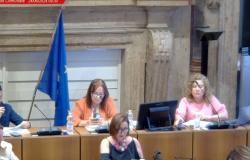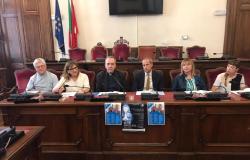If there is a cabal of numbers, Gian Luca Zattini’s winning number is found somewhere around 27,800-27,900. In fact, in the first round of the 2019 elections, the then centre-right outsider mayor obtained 27,905 votes. Five years later, a period of time in which the world has changed, Zattini is still there: he wins with 27,819 votes, i.e. a handful of preferences less. In between there was a pandemic, a couple of wars at the gates of Europe, an energy crisis, the rise and decline of entire political parties, and finally a flood that overwhelmed the city, but he, Zattini , among all the numbers that fluctuate in contemporary politics, remains anchored and fixed at its number, around 27,800-27,900. There are many people from Forlì who gave him preference in the first vote (separate ballot, therefore), today as 5 years ago.
Paradoxically (even with 86 votes less) things went better for him in this round than in 2019. In fact, the same package of votes in 2019 was worth “only” 45.8%, forcing him into a run-off. In 2024, however, the same number of votes totaled 50.63%, due to the decrease in turnout. But it was only discovered at the end that things went better for him. First there were three big chills for Zattini. Let’s see them.
The unknown of turnouts
The first thrill (the last in chronological order): in fact, just 290 fewer votes would have been enough to force him into the second electoral race of the run-off in two weeks, completely reopening the games given the narrow margin over Rinaldini. The second thrill: the low turnout, which historically “punishes” the right more than the left. And when turnout numbers are low and many candidates are competing for personal preference (only the 15 most voted on the lists have “directed” more than 8,000 votes), the schemes fall apart and anything can really happen. A separate reflection, however, must be made on voter participation, which politics poses as a problem only in the ten minute wait before the exit polls. In 2019, the first round for choosing the mayor saw 62,200 Forlì citizens mobilised, five years later this dropped to 56,200 (6,000 fewer voters).
The composition of the city council
The centre-left’s advantage at the European Championships
And finally the third thrill for Zattini (the first in chronological order): the European elections gave the centre-left a clear advantage in Forlì. The forces that supported Rinaldini, on Sunday night, had totaled 49.3%, those that supported Zattini 43.7% (splitting the “endowment” of Italia Viva e azione equally between the two), a gap of over 4 and a half percentage points that left people rubbing their hands all Monday morning in Graziano Rinaldini’s headquarters. But politics is not about algebraic sums, even when the voter votes in the same place, on the same day and at the same time on two different ballots. And over the course of the afternoon, with an exhausting count that went very slowly compared to neighboring municipalities, the balance gradually saw the weights in their respective plates reversed.
The preference record holders
The reversal of the balance in favor of Zattini, the reason why
What happened? Essentially, around 2,300 votes passed from the center-left area to the center-right, with another hundred more voters who opted for that convoluted and difficult to understand formula of the split vote, always in favor of Zattini. What’s behind this data? An operation by Zattini himself started in 2019 and called the civic list, and wisely never abandoned 5 years ago, as happens in the vast majority of cases the day after the elections. The architect of this operation that made the difference is called Paola Casara, who has always held the reins of the political formation, which in turn repaid her with the record of preferences (1,247 votes, many of which – it is the logic of reasoning – they probably come from the center-left).
What happened in the center-left?
In the centre-left, in fact, something changed between the brown ballot of the European elections and the blue ballot of the municipal elections: first of all, we witnessed the fall of the 5 Star Movement (which went from 9% of the 2022 elections to 6.8% of the 2024 European elections ), and then to its simultaneous collapse from one card to another: 4 out of 10 five-star voters in the European elections “repudiated” their party by voting for another a few moments later in the municipal elections (so from 6.8% the drop was down to 4%). This is over 1,500 votes less.
The Democratic Party is also “bad”, losing around 2,800 votes between one ballot and the other, as does the Green-Left Alliance, which loses almost 600 votes between the two ballots. However, the centrist ‘Rinnoviamo’ list did well (around 3,000 votes) and certainly managed to take a share of the votes leaving Italia Viva e Azione, and also a part of the votes leaving the allies, but not compensating at all. There is in fact a difference of 2,400 votes that went towards the contender.
Read ForlìToday news on WhatsApp
What happened in the center-right?
In the center-right the dynamics were more complex and overlapping. Like the Democratic Party and the M5S, Fratelli d’Italia also “burned” several votes from the European elections ballot to the municipal elections ballot: almost 4,900 voters who drew Meloni’s symbol did not make the same gesture again at the municipal elections. And who did they vote for? It is probable that their vote remained within the coalition, primarily the League, which, in contrast to the European elections, increased its consensus by around 1,200 votes (from 6% of the European elections to 8.7% of the municipal elections.
The League was driven by the extensive search for personal preferences (the head-to-head between the two outgoing Northern League councilors Daniele Mezzacapo and Andrea Cintorino was impressive, with 459 preferences for him and 458 for her). The choice to nominate exponents such as Francesco Lasaponara and Barbara Rossi (Centrodestra for Forlì) or Lauro Biondi (leaving Forza Italia) as independent candidates was therefore apt: although they were not elected, they brought grist to the League’s mill).
But it was the civic list ‘La Civica’ that captured all the votes coming out from the various parties: specially filled with personalities from various worlds of society to attract the moderate fluid vote. The mayor’s personal list probably received those 2,400 votes leaving the center-left, even at the cost of cannibalizing his own allies: it can be estimated that a third of the ‘Civic’ votes are those who passed from one side to the other, a approximately another third are the centrists of Italia Viva and Azione, and the last third are an electorate of Fratelli d’Italia and Forza Italia to a lesser extent. In Civica, the Italia Viva component wins (which elects Leonardo Gallozzi as municipal councilor), while the same operation fails in Azione (Sara Samorì excluded from the council with 165 preferences). The outgoing president of the city council Alessandra Ascari Raccagni (PRI) was also not elected.






